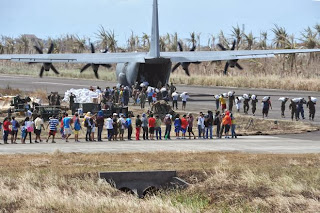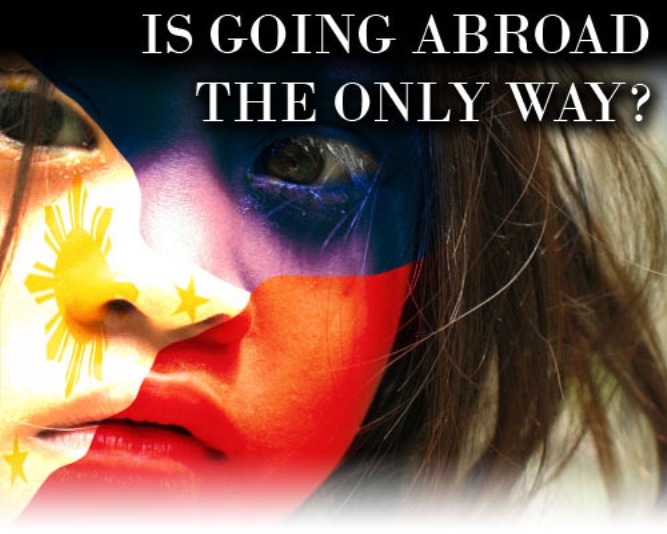
Untold History of Russia links to the Visayas Island of the Philippines. Photo credit: independent.co.uk
Tubabao, Guiuan (pronounced as "Ghi-wan" or "Gee- One") devastation opened the untold part of Russian history that links the Philippines Island for the 1949's Mao's communist forces approaching Shanghai China which was once the home of the white Russian refugees who flee aftermath of the Bolshevik Revolution.
It was not only for Israel's untold story who survived from the Nasi Germany holocaust by fleeing to the very welcoming Philippines for refugees but also the untold stories of more than the number of the Israel refugees in the Philippines with a six times fold or 6,300 white Russian refugees to the Philippine sin 1949.
When the International Refugee Organization, established to tackle the displacement crisis caused by the war; like how the country welcome to the Jewish refugees, the Philippines is the first country to open for white Russian refugees then slowly, various other nations stepped forward to accept the refugees on a permanent basis and the White Russians were scattered, especially to the US, Australia, and South America.
How many more untold stories being kept by the more than 7,000 islands in the Philippines, let's wait for more highlighting events to come.
Are you searching for a fast and affordable Shared, VPS and Dedicated webhosting service? Visit SOMOSOTECH at [ www.somosotech.com ]
A forgotten episode in Russian history leaves links with the Philippines
Guiuan was central to a remarkable part of the Cold War
One evening a couple of weeks ago, beneath a cavernous sky, I stood on the edge of a 7,000ft airstrip in the Philippines peering into the darkness. The airfield at Guiuan, built by American forces during the Second World War as part of General Douglas MacArthur's operation to drive the Japanese from the Philippines, was now being used by US troops to land emergency supplies for the town devastated by Typhoon Haiyan and to evacuate the injured and sick.
The Americans overseeing the supply drops were tickled by the idea of history retracing itself more than six decades on. But it was something that an aid official had said a couple of days earlier that had me entranced; a few years after the war's conclusion, the official said, the airstrip had been used for a dramatic evacuation of White Russian refugees, fleeing the Communist forces of Mao Zedong.
It all seemed too fanciful. And yet, it transpires, the official was correct: the town of Guiuan, where officials say 100 per cent of buildings were either damaged or destroyed, was central to a remarkable tale of the Cold War that has now been forgotten.
In 1949, with Mao's forces approaching Shanghai, an appeal was made by the International Refugee Organisation, established to tackle the displacement crisis caused by the war. It wanted new homes for thousands of White Russians, those people who had emigrated from Russia in the aftermath of the Bolshevik Revolution and whose lives were now in danger from the Communists.
Only one country responded positively. And so it was that more than 5,000 White Russians, under the care of John Maximovitch, the Orthodox Archbishop of Shanghai who would later be canonised, were taken to the island of Tubabao, located off the coast of Guiuan.
"There are many variances as to how many took refuge here but the most accurate approximation runs to some 6,300," Ricardo Suarez Soler, the Manila-based author of The Saga of the White Russian Refugees in the Philippines, told me.
An advance party of White Russian boy scouts was apparently flown to Guiuan to prepare an area on Tubabao for the tent city the thousands of refugees would call home, hacking away at the sugar cane with machetes. Most came in ageing, listing boats, reportedly crewed by Chinese former prisoners, on a journey that took between one to two weeks. When they got there, the refugees were given food and supplies deemed surplus to the needs of the Americans.
One of those who made the journey was Nikita Gileff. Now a retired school principal in Australia, Mr Gileff was seven when he and his mother landed at Tubabao.
"It is part of history that appears to have been lost," said Mr Gileff, speaking from Sydney. "We came ashore in the same landing craft that had been left behind by the Americans."
Gradually, various nations stepped forward to accept the refugees on a permanent basis and the White Russians were scattered, especially to the US, Australia, and South America.
But the bond between Guiuan and its former residents has remained strong. Four years ago, the then mayor of the town issued an invitation to White Russians to visit and a number took up her offer.
Alexander Vassilief, whose family also escaped from China, said his late grandmother, Yefrasinya Vajinsky, along with two aunts and three uncles, spent time on Tubabao. "Most did not complain," said Mr Vassilief, a retired engineer who also lives in Sydney and has written his own chronicle of the events.
Indeed, last month, as the extent of the damage wrought upon Guiuan by the storm became clear, Russian communities around the world sent messages of support and held fund-raising events.
Are you searching for a fast and affordable Shared, VPS and Dedicated webhosting service? Visit SOMOSOTECH at [ www.somosotech.com ]
Nikolai Massenkoff was 10 when he and his mother were evacuated to Tubabao. Today he lives in California where he is a celebrated performer of traditional Russian songs. Having been unable to take up the invitation from Guiuan's mayor in 2009, he instead travelled there in 2011 and performed a thank-you concert. He is now planning a series of fund-raising events and a documentary containing footage of his 2011 concert is to be shown at a Philippines fiesta later this month in San Francisco.
"The people of the Philippines were warm and kind and gentle. They were the only place that could offer the refugees a place at short notice," recalled the 74-year-old. "The whole Russian community has been deeply saddened by the tragic events."
During their time on Tubabao, the refugees built several chapels. None remains today. However in September, six weeks before Typhoon Haiyan, a small group of Orthodox pilgrims visited Tubabao where a shelter had been constructed to hold the first such service there for more than 60 years. The Orthodox priest who performed the liturgy, Father Seraphim Bell, an American citizen, said local people had been friendly and welcoming. "Members of the local community expressed hopes Russians would return for pilgrimages to Tubabao and the chapel there," he said.
With story published in The Independent










